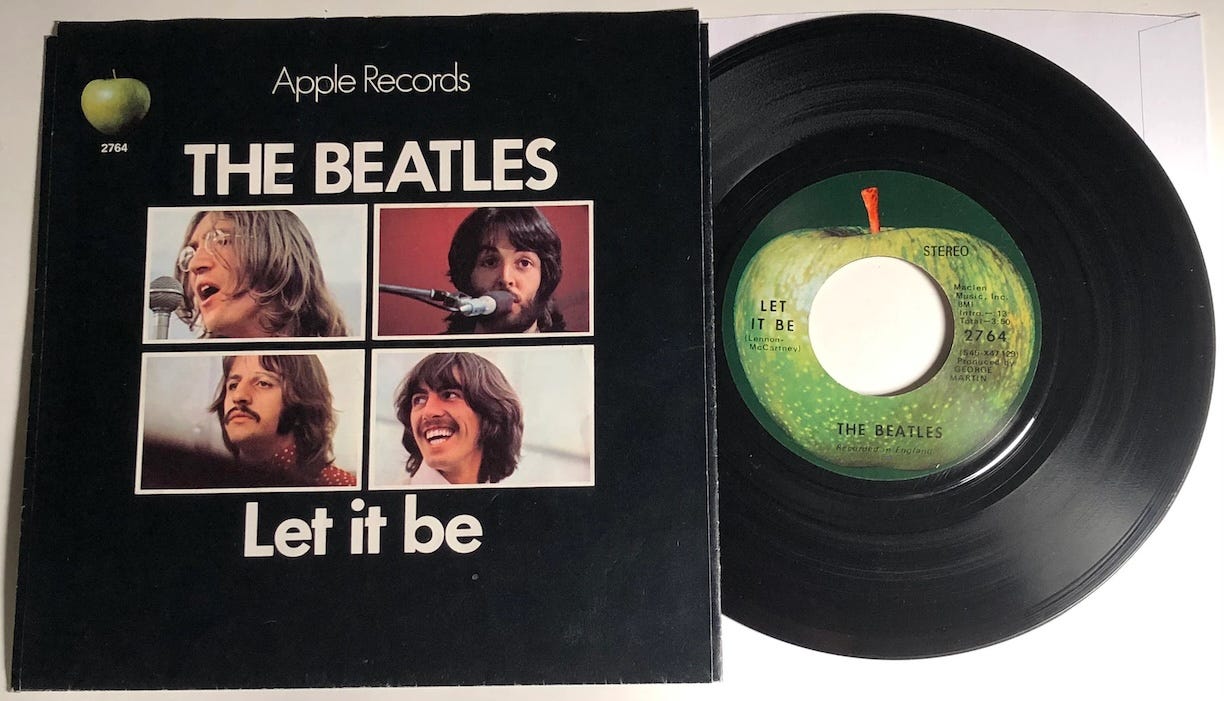Billy B. Good Fun Facts and Trivia Snacks, Vol. 145
Featuring Guinness, burger chains, and lightning strikes
Your Fun Facts For This Week:

It has become common for people to refer to their dogs as members of the family.
Well, in six states, dogs ARE legally part of the family, which means they can be subject to custody battles in court.
Those six: New York, Alaska, California, Illinois, Maine, and New Hampshire.
* * *
Martha Stewart claims she’s been struck by lightning three times.
The first time it supposedly hit her garden outside, then came up through her sink’s faucet and struck her in the stomach.
The second time it came through one of her home’s skylights.
And she told Snoop Dogg it happened a third time through her telephone.
In her words: “I just attract electricity.” She added: “I think it actually is good for you—if it doesn’t kill you.”
* * *
The classic phrase, “‘Tis better to have loved and lost than never to have loved at all” is from a poem by Lord Tennyson in 1849.
It might surprise you to learn it’s not about romantic love.
The poem is called “In Memoriam A.H.H.” where Tennyson mourns the death of a friend.
* * *
Because they’re automatically associated with fast food burgers, it’s easy for people to assume that McDonald’s was the first fast food burger chain in the country.
Nope.
The first to create a chain of restaurants where the food was made in one standard way—so it looked and tasted the same everywhere—was White Castle.
Walt Anderson and Billy Ingram opened their first White Castle in Wichita, Kansas in 1921. The second, in Columbus, Ohio, opened in 1929.
The second McDonald’s didn’t open until 1953 in North Hollywood, California. An interesting fun fact: That McDonald’s was eventually torn down to make way for . . . an Arby’s.
* * *
Where did the terms “left” and “right” come from in regard to politics?
They first appeared during the French Revolution of 1789, when members of the National Assembly divided.
Conservative supporters of the old regime sat to the president’s right, and the more liberal supporters of the revolution sat to his left.
* * *
A few years before that revolution, in 1759, Arthur Guinness signed a lease for a brewery in Dublin, Ireland.
It wasn’t your typical three- or five-year lease. Not even 100 years.
No, Arthur signed a 9,000-year lease at $75 per month.
So that means Guinness will be in that brewery until the year 10,759—when they can renegotiate, if they like.
* * *
Just so you know:
The Harlem Globetrotters were founded in Chicago, and their offices today are in Georgia. They’ve never been based anywhere in New York, let alone Harlem.
* * *
Even though it was a deeply personal song—written about his mother, Mary, who died when he was 14 years old—Paul McCartney originally offered the song “Let It Be” to someone else.
And not just ANY singer. McCartney sent the song to Aretha Franklin. She recorded it, but didn’t release it for so long that the Beatles decided to go ahead and do it themselves in early 1969.
Aretha eventually did release her version, but not until 1970.
* * *
Speaking of the Fab Four, you can thank them for the CT scanning used today in medicine.
The Beatles’ early record label, EMI, funneled the profits generated by the pop band into medical research equipment, which then developed the full-body CT scanner.
It even led to a Nobel Prize.
* * *
Just so you know, Part Two:
There are only 28 hotels in the world with more than 3,000 rooms—and 15 of them are in Las Vegas.
Fun Fact Spotlight: How soap works
We’ve been told for more than a century to wash our hands. And when the pandemic hit, it became an international obsession.
But washing your hands with soap was considered crazy when it was first proposed.
A Hungarian doctor and scientist named Ignaz Semmelweis was the first person to officially push for the practice. His research showed mortality rates in women who’d recently given birth were drastically reduced when physicians and nurses disinfected their hands.
But doctors were outraged that they could be considered the cause of infections. They not only ridiculed Semmelweis, but labeled his findings “scientifically unsound.”
When the blowback caused him to suffer a nervous breakdown, they had him thrown into a mental institution.
He was subsequently beaten by the guards and died two weeks later. All because he insisted that people should wash their hands in hospitals.
How does it work?

Soap doesn’t necessarily kill harmful bacteria and germs. Instead, what it does is coat the nasty stuff so it can be rinsed away.
Soap molecules have a head and a tail. The head portion attracts water, while the tail attaches to dirt, oils, and fats.
When you wash your hands, the soap grabs hold of the germs and bacteria, and, when you run your hands under water, it also latches onto the water molecules.
So potentially dangerous dirt and bacteria slides right off your skin.
It’s a little more complicated, and you can read more about it here. But that’s essentially what’s happening.
Trivia Snacks
- We’ll never know the exact origin of soap, but historians believe it was a byproduct of meats being roasted over a fire, with the fats sliding off and being collected.
- In the 1830s, William Procter saw the potential of soap manufacturing and promptly switched his factory from making candles to producing soap—along with his partner, James Gamble. The names probably sound familiar.
- Procter & Gamble’s first big hit, Ivory Soap, grabbed attention because it floated in water. The company claimed that proved its purity.
An entire myth sprang up around Ivory’s creation, but an entry in Gamble’s diary from 1863 showed that they simply made it from the leftovers of slaughtered livestock.
- There’s a difference between soap and detergent. Detergent—from a Latin word that means “to wipe away”—uses enzymes, which pretty much perform the same function as soap.
And most of what you wash your hands with today is actually a synthetic detergent, rather than true soap.
- Today, the bestselling brand of soap in the U.S. is Dove, with nearly 20 million people using it daily.






